How to pressurize the expansion vessel
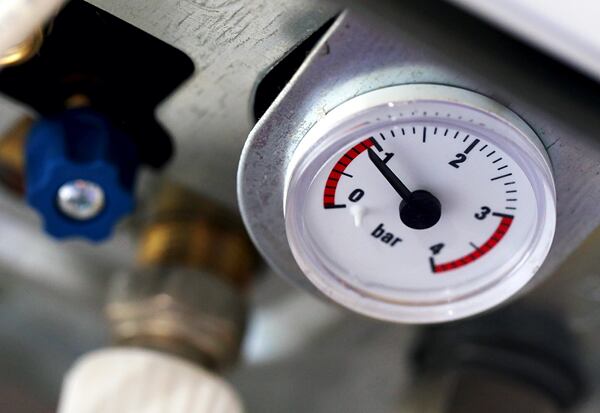
Expansion vessel for heating
The function of the expansion vessel in the boiler is to compensate for volume changes in the liquid due to changes in the water temperature in the heating system. The steel body of the container is divided into two parts of the inner space. One part is the space where the gas (air) is compressed and the other part is the space for collecting heating water. A valve is installed on the compressed air side, which re-blows the air when it escapes from the expansion vessel. The valve is installed in most cases on the opposite side to the water supply, but in some cases the valves are installed in the middle of the expansion vessel or on the side of the water supply to the vessel. Each expansion vessel in the boiler is factory-pressurized in the air chamber to 1-1.2 bar. The overpressure in the expansion vessel must be checked during installation and, if necessary, adjusted according to the size of the heating system.
The volume of the vessel should correspond to the volume and characteristics of the heating system. In gas boilers (conventional or condensing) there are most often expansion vessels with a volume of 5 liters to 12 liters, which corresponds to the volume of the heating system of approximately 70 to 160 liters of water. Structurally, the expansion vessels are divided into rectangular or circular. The vessel connection is according to the requirements of the boiler manufacturers. Most often, expansion vessels are connected to heating systems using a 3/8 "to 1" external thread.
Round EXPANSION vessel of the PROTHERM boiler with a volume of 5 liters

Rectangular EXPANSION container VAILLANT with a volume of 10 liters
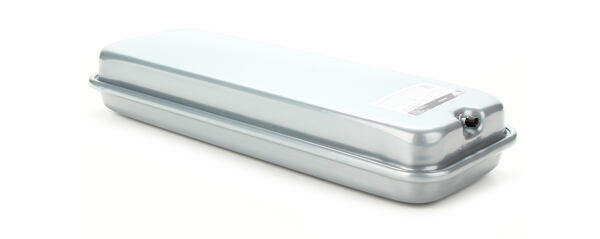
Expansion vessel maintenance
The expansion vessel in the boiler must be checked at least once a year. During the inspection, it is necessary to disconnect the vessel from the heating system and drain the water from the expansion machine. On the side where the air is filled, unscrew the valve cover and measure the gas (air) pressure using a pressure gauge and, if necessary, add the pressure to the required value (1-1.2 bar) and screw the valve cover back on. We only inflate the expansion vessel if the vessel is disconnected from the system and the water is drained..
How to inflate an expansion vessel?
1 - inspection of the expansion vessel using a pressure gauge in the cold state of the heating water (20 ° C)
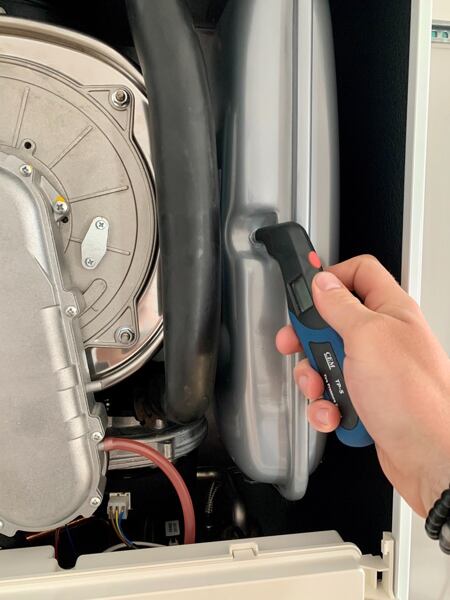
2- drain the water from the boiler and disconnect the expansion vessel from the heating system
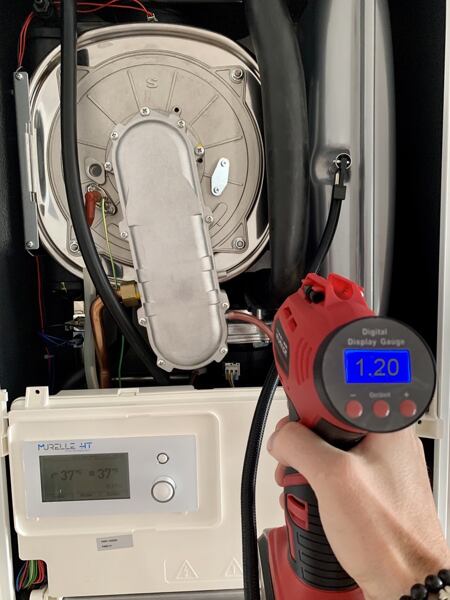
3 - top up the pressure in the expansion vessel to the required value (expansion vessels in boilers have a factory-set pressure of 1-1.2 bar)
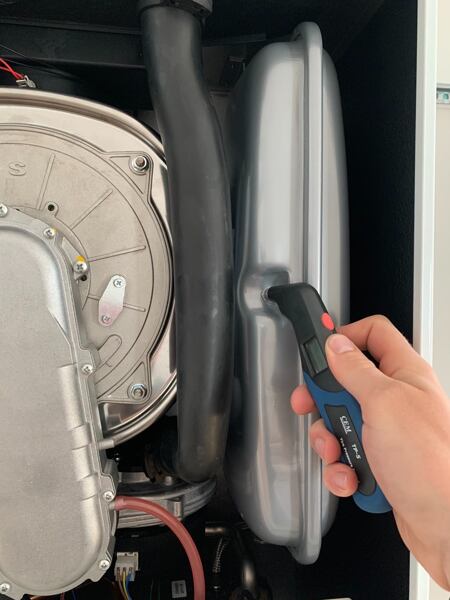
4 - check the pressure in the vessel using a pressure gauge
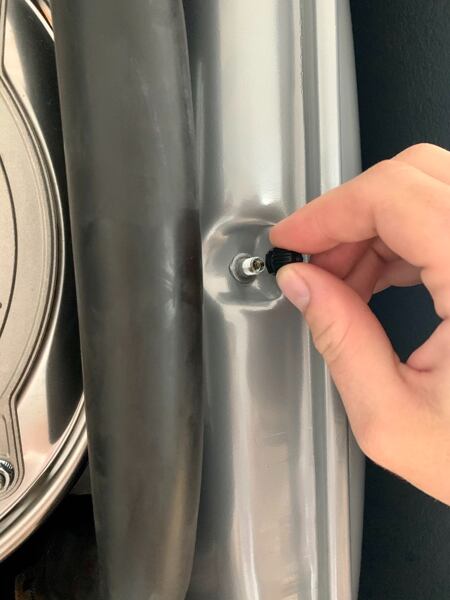
5 - Reinstall the cover on the air make-up valve in the expansion vessel


























































